THE SPACE AND NUCLEAR PROGRAMME OF PAKISTAN
What is the state of science and tecnology in pakistan?
Pakistan has made significant progress in science and technology in %%recent years.%% The country has a number of %%universities, research institutes, and science and technology%% organizations that are contributing to the development of various fields.
In terms of higher education, Pakistan has more than %%190 universities,%% with many offering programs in science, technology, engineering, and mathematics %%(STEM)%% fields. Some of the top-ranked universities in Pakistan include %%Quaid-i-Azam University, National University of Sciences and Technology, Lahore University of Management Sciences, and University of the Punjab.%%
Pakistan also has several research institutes, including the %%Pakistan Council for Scientific and Industrial Research%% %%(PCSIR),%% the %%Pakistan Atomic Energy Commission (PAEC),%% and the %%National Institute of Electronics (NIE).%% These organizations are involved in research and development in areas such as energy, agriculture, health, and defense.
In recent years, Pakistan has also made progress in the area of %%information and communication technology (ICT).%% The country has a growing IT industry, with companies such as Netsol %%Technologies, Systems Limited%%, and %%TRG Pakistan o%%perating in the country. Pakistan has also launched a number of %%initiatives aimed at promoting ICT,%% such as the establishment of software technology parks and the introduction of e-government services.
However, Pakistan still faces several challenges in the field of science and technology, including funding constraints, a lack of infrastructure, and brain drain. Despite these challenges, the country has made significant progress in recent years and is continuing to invest in the development of science and technology.

Describe some of the benefits of artificial space satellites?
Artificial satellites have revolutionized our understanding of the universe and our ability to communicate, navigate, and observe Earth from space. Some of the benefits of artificial space satellites include:
- %%Communication:%% Artificial satellites are used for telecommunications and provide us with the ability to send and receive information from almost anywhere on the planet. They are used for internet, television and radio broadcasting, as well as for communication during natural disasters.
- %%Navigation:%% Satellites are used in navigation systems such as the Global Positioning System (GPS), which provide accurate location data to a wide range of users, including the military, transportation and logistics, and outdoor enthusiasts.
- %%Scientific Research:%% Artificial satellites provide a unique platform for scientific research. They can be used to study weather patterns, climate change, and natural disasters, as well as to explore the universe and study celestial objects such as planets, stars, and galaxies.
- %%Military Applications:%% Artificial satellites are used for military applications such as reconnaissance, intelligence gathering, and missile warning systems.
- %%Earth Observation:%% Satellites equipped with sensors can observe Earth's surface and collect data on various parameters such as land use, vegetation cover, and ocean currents. This data is used for environmental monitoring, disaster management, and resource management.
- %%Economic benefits:%% Satellites are used in agriculture, forestry, and fishing industries to improve yield, reduce wastage, and monitor resources. They also facilitate international trade by providing navigational support for shipping and aviation.
Overall, artificial space satellites have brought about significant benefits to various aspects of our lives, from communication to scientific research, navigation to economic development, and military to environmental management.
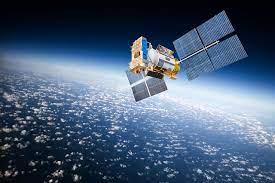
Write a note on pakistan sapce program?
Pakistan Space Program was initiated in 1961, after the establishment of Pakistan's first space research institute, the Space and Upper Atmosphere Research Commission (SUPARCO). Since then, the program has made steady progress in space research, satellite technology, and space applications.
The main objectives of Pakistan's space program are to enhance the country's capacity in space technology, promote scientific research, and contribute to national development in areas such as communication, weather forecasting, and disaster management.
Some notable achievements of Pakistan's space program include:
- %%Launch of Satellites%%: Pakistan has launched several satellites since the launch of its first satellite, Badr-1, in 1990. The most recent satellite launched by Pakistan was PakTES-1A in 2018, which is a remote sensing satellite designed for Earth observation.
- %%Remote Sensing:%% Pakistan's space program has made significant progress in remote sensing applications, including monitoring of natural resources, disaster management, and environmental monitoring.
- %%Communication:%% Pakistan has established a robust communication infrastructure through its space program, including a network of satellite ground stations and satellite communication services.
- %%Space Education and Research:%% Pakistan's space program has also contributed to space education and research in the country, with several universities offering programs in space science and technology, and research being carried out in various areas of space science.
Despite these achievements, Pakistan's space program faces several challenges, including funding constraints, a lack of infrastructure, and a brain drain of skilled personnel. However, the country's commitment to the development of its space program remains strong, with plans to launch more satellites and expand space applications in the future.
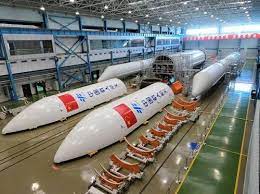
Explain the information about space obtained by sciencee and technology?
Science and technology have played a critical role in our understanding of space, providing us with valuable information about the universe beyond our planet. Here are some examples of the information about space that has been obtained through science and technology:
- %%Observations of Celestial Objects:%% Telescopes, both ground-based and space-based, have provided us with detailed observations of celestial objects such as planets, stars, galaxies, and black holes. These observations have helped us to understand their physical properties, composition, and behavior.
- E%%xploration of Our Solar System:%% Through space missions, such as the Voyager and New Horizons missions, we have explored our solar system and obtained detailed information about planets, moons, asteroids, and comets. These missions have revealed the geology, atmospheres, and composition of these objects.
- %%Study of the Universe's Origins%%: Observations of cosmic microwave background radiation, made possible through technology such as the Cosmic Background Explorer (COBE) and the Wilkinson Microwave Anisotropy Probe (WMAP), have provided us with valuable information about the universe's origins, including the Big Bang theory.
- U%%nderstanding of Space Weather%%: Satellites equipped with sensors have allowed us to study space weather and its impact on Earth's atmosphere, communication systems, and power grids. This information has helped us to better predict and mitigate the effects of space weather events such as solar flares and geomagnetic storms.
- %%Detection of Exoplanets:%% Space-based telescopes, such as the Kepler mission, have detected thousands of exoplanets, providing us with valuable information about the prevalence and diversity of planets beyond our solar system.
Overall, science and technology have allowed us to gain a greater understanding of the universe beyond our planet. This information has helped us to answer fundamental questions about our origins, the nature of the universe, and our place within it.
What is the role of rusia and america in space exploration and technology?
Russia and America have been major players in space exploration and technology since the early days of the Space Race in the 1950s and 1960s. Both countries have made significant contributions to the development of space technology and have accomplished notable achievements in space exploration.
Here are some examples of the roles that Russia and America have played in space exploration and technology:
- %%Firsts in Space:%% Russia launched the first artificial satellite, Sputnik, in 1957 and sent the first human, Yuri Gagarin, into space in 1961. America achieved the first manned moon landing in 1969.
- %%Space Stations:%% Russia was the first country to launch a space station, Salyut 1, in 1971. Since then, Russia has continued to operate several space stations, including the current International Space Station (ISS), which is a joint project with America and several other countries.
- %%Launch Vehicles:%% Both Russia and America have developed a variety of launch vehicles, including rockets and space shuttles, to transport people and payloads into space.
- %%Space Probes and Landers:%% Both countries have launched numerous space probes and landers to explore planets, moons, and asteroids within our solar system. Notable examples include America's Viking missions to Mars and Russia's Venera missions to Venus.
- %%Collaboration:%% Despite competition during the Space Race, Russia and America have worked together on several projects, including the ISS, and have collaborated on space exploration and technology through various partnerships.
Overall, Russia and America have played significant roles in the development of space exploration and technology, and their contributions have pushed the boundaries of our knowledge and capabilities in space.
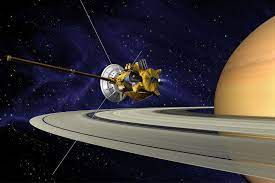
Throw light up the nuclear program of pakistan?
Pakistan's nuclear program began in the late 1950s and 1960s, after the country's independence in 1947. The program was initiated as a response to perceived security threats from neighboring India and concerns about the country's vulnerability in a volatile region.
Here are some key developments and milestones in Pakistan's nuclear program:
- %%Nuclear Capabilities:%% Pakistan conducted its first nuclear test, codenamed "Chagai-I," in 1998, which confirmed the country's nuclear capabilities. Since then, Pakistan has developed a range of nuclear weapons and delivery systems, including missiles and aircraft.
- %%Uranium Enrichment:%% Pakistan's nuclear program relies heavily on uranium enrichment, which is used to produce highly enriched uranium (HEU) for use in nuclear weapons. The country's main enrichment facility is the Kahuta Research Laboratories.
- %%International Sanctions%%: Pakistan's nuclear program has faced international sanctions and scrutiny, particularly after the 1998 nuclear tests. The country has been accused of proliferation, including providing nuclear technology to countries such as North Korea and Iran.
- %%Nuclear Doctrine:%% Pakistan's nuclear doctrine is centered on deterrence, and the country has repeatedly stated that its nuclear weapons are for defensive purposes only. The country's military controls its nuclear weapons, and the exact details of Pakistan's nuclear command and control structure remain largely unknown.
- I%%nternational Cooperation:%% Despite its history of proliferation, Pakistan has engaged in international cooperation on nuclear security issues and has taken steps to improve its nuclear security and safety measures.
Overall, Pakistan's nuclear program remains a controversial and sensitive issue both domestically and internationally, with concerns about nuclear security, proliferation, and stability in the region.
What are the hazards of nuclear energy?
Nuclear energy has several potential hazards associated with it, including:
- %%Accidents:%% Nuclear accidents can have devastating consequences, as demonstrated by the Chernobyl disaster in 1986 and the Fukushima disaster in 2011. These accidents can result in radiation leaks, environmental damage, and health impacts on both humans and wildlife.
- %%Nuclear Waste:%% Nuclear energy produces radioactive waste that remains hazardous for thousands of years. The storage and disposal of this waste pose significant safety and environmental risks, including the potential for leaks and contamination of the surrounding area.
- P%%roliferation:%% The use of nuclear energy for civilian purposes can also increase the risk of nuclear weapons proliferation. Nuclear materials can be diverted for military use, and the expertise gained from nuclear power can be used to develop nuclear weapons.
- %%Terrorism:%% Nuclear power plants and facilities are also potential targets for terrorist attacks, which could result in radiation releases and significant harm to the surrounding area.
- %%Cost:%% Nuclear energy is expensive to produce and maintain, with high capital costs and ongoing maintenance and disposal costs.
Overall, while nuclear energy has the potential to be a significant source of low-carbon energy, it also carries significant risks and challenges that must be carefully managed to ensure public safety and security.
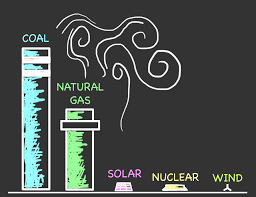
What do you know about SUPARCO?
SUPARCO (Space and Upper Atmosphere Research Commission) is the national space agency of Pakistan. It was established in 1961 by the government of Pakistan, with the aim of developing the country's space program and contributing to scientific and technological development.
Here are some key facts and developments related to SUPARCO:
- %%Objectives%%: SUPARCO's main objectives are to carry out research in space science, technology, and applications, and to promote the peaceful use of space for socio-economic development.
- P%%rograms and Activities%%: SUPARCO has developed a range of programs and activities, including satellite development, remote sensing, atmospheric and space research, and astronautics.
- %%Satellites:%% SUPARCO has launched several satellites, including the Pakistan Remote Sensing Satellite (PRSS-1) and the Pakistan Technology Evaluation Satellite (PakTES-1A).
- %%International Cooperation:%% SUPARCO has collaborated with a number of international organizations, including the United Nations Office for Outer Space Affairs (UNOOSA), the International Astronautical Federation (IAF), and the International Academy of Astronautics (IAA).
- %%Challenges:%% SUPARCO faces several challenges, including limited funding and resources, a shortage of qualified personnel, and the need to develop partnerships with other countries to expand its capabilities and expertise.
Overall, SUPARCO is an important institution for Pakistan's scientific and technological development, and it has made significant contributions to the country's space program and capabilities.
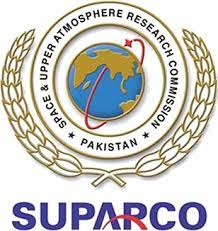
What are the misuses and disadvantages of nuclear energy?
There are several potential misuses and disadvantages associated with nuclear energy:
- %%Nuclear Weapons Proliferation:%% The same technology used to produce nuclear energy can also be used to produce nuclear weapons. Therefore, there is a risk that countries could misuse nuclear energy for military purposes, leading to the proliferation of nuclear weapons.
- Nuclear Accidents: Nuclear energy can be hazardous if not handled properly. Accidents can have devastating consequences, as seen in the Chernobyl and Fukushima nuclear disasters. The resulting radiation releases can cause long-term environmental damage and human health impacts.
- %%Radioactive Waste:%% Nuclear energy generates radioactive waste that remains hazardous for thousands of years. The storage and disposal of nuclear waste pose significant safety and environmental risks, including the potential for leaks and contamination of the surrounding area.
- %%High Capital and Operating Costs:%% Nuclear energy is expensive to produce and maintain, with high capital costs for building nuclear power plants and ongoing operating costs for safety and waste management.
- %%Public Perception:%% Nuclear energy is often associated with negative perceptions and concerns about safety, leading to opposition to the construction of new nuclear power plants.
Overall, while nuclear energy has the potential to be a significant source of low-carbon energy, it also carries significant risks and challenges that must be carefully managed to ensure public safety and security.
What is the function of satellite?
The primary function of a satellite is to provide various types of services and information to users on the ground, including:
- %%Communication:%% Satellites are used to facilitate global communication by relaying signals from one point on the Earth to another. This includes television and radio broadcasting, internet communication, and telephone services.
- %%Navigation:%% Satellites can provide location information through global positioning systems (GPS) that are used in a variety of applications, including transportation, surveying, and military operations.
- %%Earth Observation:%% Satellites can capture high-resolution images of the Earth, which are used for environmental monitoring, weather forecasting, and scientific research.
- %%Remote Sensing:%% Satellites can also capture data in various spectral bands, which can be used to monitor crops, vegetation, oceans, and land use changes.
- %%Scientific Research%%: Satellites can be used to conduct scientific research in space, including astronomy, planetary exploration, and earth science.
Overall, satellites play a crucial role in providing critical services and information to a wide range of users and have become an essential part of modern life.
How many kilometers does the earth's atmosphere extend from the surface of the earth?
The Earth's atmosphere extends up to an altitude of approximately %%1000 km (620 miles)%% from the Earth's surface. However, the majority of the atmosphere is concentrated in the lower region of the atmosphere, which extends up to an altitude of approximately %%10-15 km (6-9 miles)%% above the Earth's surface. This region of the atmosphere, known as the troposphere, contains most of the Earth's weather and climate systems, as well as the majority of the air that we breathe. Above the troposphere, the atmosphere extends through several other layers, including the stratosphere, mesosphere, and thermosphere, before finally merging into outer space at an altitude of around %%1000 km (620 miles).%%
What was the main purpose to launch space shuttle?
The main purpose of the space shuttle program was to provide a reusable and reliable vehicle for human spaceflight, as well as to support the development of space infrastructure and technology.
The space shuttle was designed to carry astronauts, along with payloads of up to %%27,500 kg (60,600 lbs),%% into orbit around the Earth. This allowed for the deployment of satellites, the construction of the %%International Space Station (ISS),%% and the repair and maintenance of other spacecraft in orbit.
In addition, the space shuttle program also played a critical role in advancing space technology and research, including studies of the Earth's atmosphere, the effects of microgravity on human biology, and the exploration of other planets and celestial bodies.
Overall, the space shuttle program was an important component of %%NASA's%% efforts to explore and understand our universe, and it paved the way for many of the space programs and technologies that we use today.